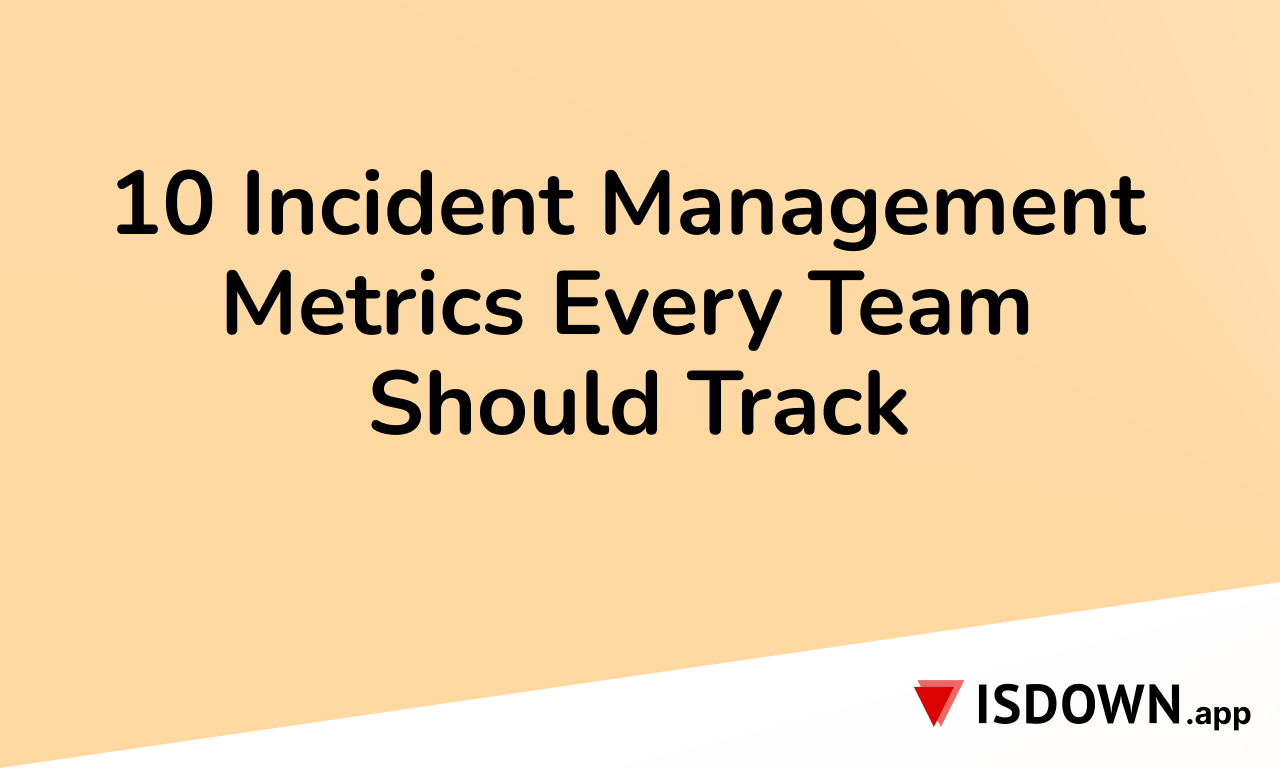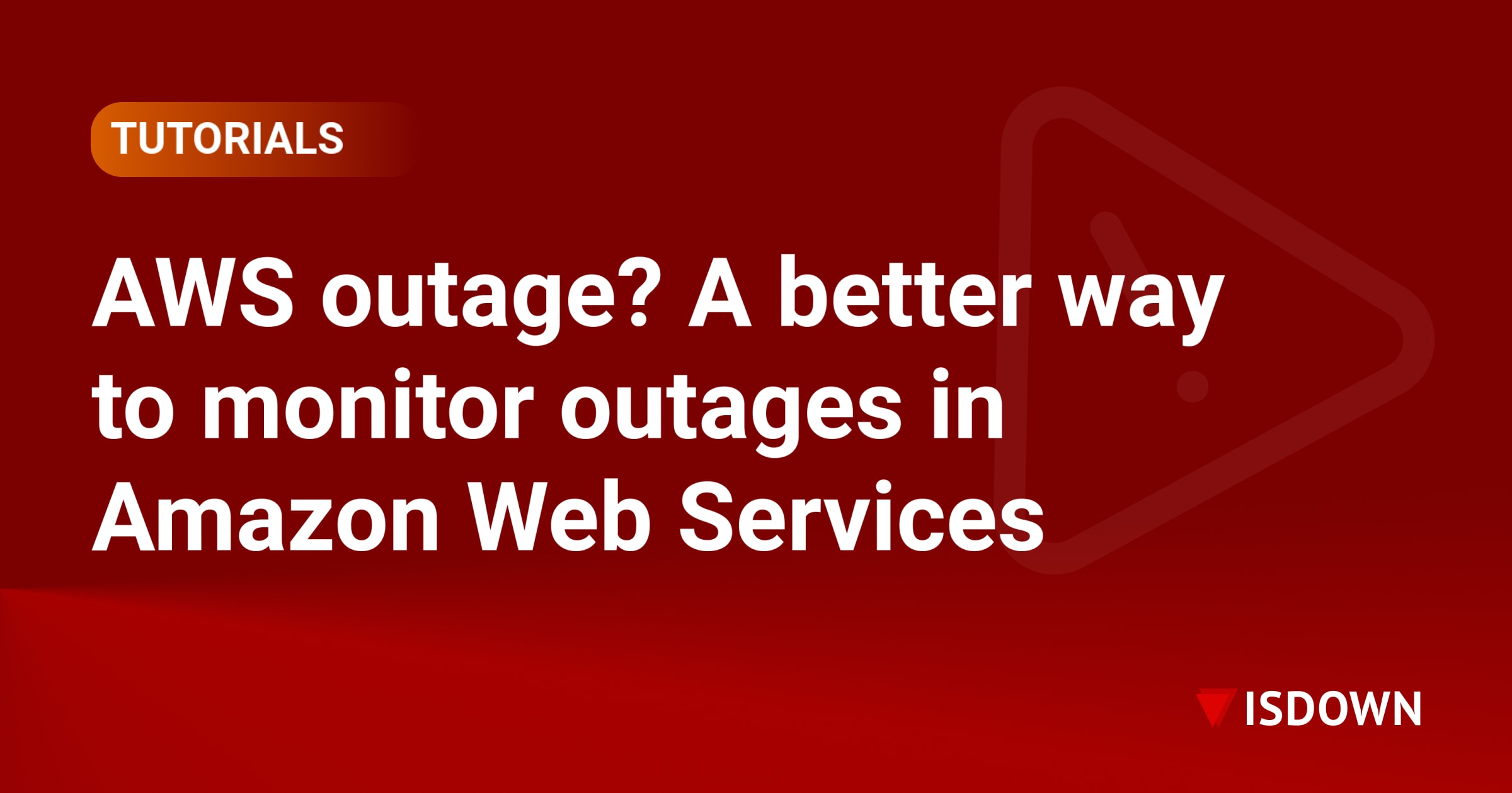10 Incident Management Metrics Every Team Should Track

Unexpected service disruptions happen, whether it's a system crash, a cloud vendor outage, or a performance issue that affects your users. When incidents hit, how your team responds can make all the difference in minimizing impact and restoring normal operations quickly.
That's where incident management metrics come into play. These aren't just numbers. They are valuable indicators that show how well your team detects, responds to, and resolves incidents. By tracking the right metrics, you can uncover process gaps, reduce response times, and make better decisions across your entire incident workflow.
More importantly, these insights help your team stay accountable, improve service reliability, and meet the expectations of both internal stakeholders and end users.
In this guide, we'll cover 10 essential incident management metrics that every team should be tracking, along with tips on how to use them to improve performance, prevent recurring issues, and stay ahead of outages.
What Are Incident Management Metrics and Why They Matter
Tracking the right incident management metrics helps your team respond faster and more effectively to service disruptions. These performance indicators show how quickly your response team detects, acknowledges, and resolves issues, making it easier to improve your overall incident response process.
By focusing on the most important key metrics, teams can reduce downtime, remove workflow blockers, and make better decisions. This is especially useful for DevOps and SRE teams aiming to optimize performance and improve incident management over time.
Whether you're dealing with an outage, a drop in uptime, or a common incident, these metrics provide the visibility needed to take action and track progress against SLAs.
Metrics vs KPIs: What's the Difference?
It's easy to confuse metrics and KPIs, but they serve different roles in the incident management process.
A metric is any measurable value used to assess a specific activity. For instance, Mean Time to Acknowledge (MTTA) is a metric to track how quickly your team responds to an alert.
A KPI, or Key Performance Indicator, ties that measurement to a business goal. For example, "Reduce MTTA by 20% this quarter" transforms the metric into a KPI by attaching a performance target.
In short, key performance indicators measure how well you're meeting your objectives, while metrics provide the raw data behind those efforts. Both are important for building an effective incident response plan.
The Role of Metrics in Incident Lifecycle Visibility
Every incident response follows a path: detection, acknowledgement, resolution, and recovery. Tracking incident response metrics throughout this lifecycle gives teams a clear picture of how effectively they are managing issues.
For example:
- Mean Time to Detect (MTTD) shows how quickly you identify a problem.
- MTTA reveals how fast your team begins working on it.
- MTTR, or mean time to resolution, measures how long it takes to fully resolve the issue.
- MTBF reflects the reliability of your systems over time between failures.
Monitoring each phase helps you avoid noise from excessive alerts, speed up your response time, and reduce overall resolution time.
By tracking key metrics throughout the incident lifecycle, such as detection, acknowledgment, resolution, and recovery, teams can improve metrics such as MTTR and MTBF, along with MTTD and SLA compliance, leading to better coordination and a stronger incident management strategy.
Top 10 Incident Management Metrics
Tracking the right incident management metrics helps teams detect problems early, respond faster, and improve the overall incident response process. Below are ten of the most important key metrics that provide insight into team performance, system reliability, and service quality.
1. Mean Time to Detect (MTTD)
Definition: The average time between when an incident begins and when it's first detected by your tools or team.
Why it matters: A lower mean time to detect means your team can begin addressing issues before they escalate into bigger problems or service disruptions.
Example: If a server goes down at 10:00 AM and the monitoring system detects it at 10:07 AM, the MTTD is 7 minutes.
How to improve: Use real-time monitoring tools, anomaly detection systems, and clearly defined detection thresholds to speed up discovery.
2. Mean Time to Acknowledge (MTTA)
Definition: The time from when an alert is generated to when a team member acknowledges it and begins working on the issue.
Why it matters: Mean time to acknowledge reflects how quickly your response team reacts after being notified. Delays here can increase resolution time and worsen the impact of an incident.
How to reduce: Assign on-call responsibilities clearly, implement alert prioritization, and use automated escalation policies to avoid missed or delayed responses.
3. Mean Time to Resolve (MTTR)
Definition: The time it takes to resolve the issue and return the system to normal operations.
Clarification: MTTR can also refer to mean time to repair, recover, or respond, depending on the focus. Always align on a clear definition with your team.
Why it matters: This is one of the most common incident response metrics and is critical for reviewing post-incident performance and meeting SLA targets.
4. Mean Time to Contain (MTTC)
Definition: The total time it takes to detect, acknowledge, and stop a threat or service issue from spreading or causing further harm.
Why it matters: MTTC gives a more complete view of how effectively your team handles coordinated incident response. It's especially important in cybersecurity and complex failure scenarios.
How to improve: Ensure your team has clear containment playbooks and uses automation to reduce manual delays.
5. Mean Time Between Failures (MTBF)
Definition: The average time between two repairable system failures during normal operations.
Why it matters: This proactive metric helps teams evaluate system reliability and predict when failures are likely to occur again.
How to act: Use MTBF to spot aging infrastructure or frequently failing systems that may need replacement or redesign.
6. First Touch Resolution Rate
Definition: The percentage of incidents that are fully resolved by the first responder without needing to escalate.
Why it matters: A high rate indicates strong frontline performance and effective incident management practices.
How to improve: Invest in detailed knowledge bases, staff training, and response playbooks to empower first responders.
7. Escalation Rate
Definition: The proportion of incidents that are escalated to higher-tier support teams.
Why it matters: A high escalation rate may point to skill gaps, unclear triage processes, or overly complex incidents.
How to fix: Train frontline staff to handle more issue types, and regularly review triage and escalation policies.
8. Incident Volume and Frequency
Definition: The total number of incidents over a set time period, such as weekly or monthly.
Why it matters: Tracking this metric helps identify patterns, peak times, or recurring problems tied to system changes or dependencies.
Use case: Segment incidents by type, severity, or affected service to better understand and manage workload.
9. SLA Compliance Rate
Definition: The percentage of incidents resolved within agreed service level targets, such as uptime or response time.
Why it matters: Failing to meet SLAs can damage customer trust and result in penalties. This metric shows how reliably your team meets expectations.
How to improve: Use automated SLA tracking tools and adjust targets regularly based on incident data and feedback.
10. Customer Satisfaction Score (CSAT / NPS)
Definition: Feedback collected from customers after an incident is resolved, usually through short surveys.
Why it matters: Even if technical metrics look good, a poor CSAT score reveals that the user experience suffered during the incident.
How to measure: Use a simple post-incident survey or an NPS question like "How likely are you to recommend us?" to gather quick insights.
Measuring the Cost of Incidents
Not all impact shows up in response times or uptime percentages. Some of the most serious effects of an incident are financial. Knowing the incident cost helps teams and leaders understand how disruptions affect the business.
Common costs include:
- Lost revenue from downtime
- SLA penalties
- Reduced productivity when teams are pulled away from their usual work
- Damage to your brand's reputation
To manage these risks, create a simple cost model for each type of incident. For example, estimate lost sales, time spent by engineers, and any penalties for missed SLAs.
Even rough estimates can be useful. They help justify budgets for tools, training, or more people. When leaders see the real cost of incidents, it's easier to invest in solutions that reduce the impact next time.
Combining technical metrics with cost estimates gives you a fuller view of incident severity and a stronger case for future improvements.
Choosing the Right Metrics for Your Team
Not every team needs to track the same incident management metrics. The right ones depend on your team's size, structure, and maturity. Tracking too many can cause confusion and alert fatigue. It's better to focus on metrics that match your goals and resources.
Aligning Metrics With Team Goals and Capacity
A lean startup with a small team and limited infrastructure might focus on just a few high-impact metrics like MTTA and MTTR, which directly affect response efficiency. These help the team minimize downtime and stay agile without being overloaded with data.
In contrast, a larger enterprise team managing critical services may also monitor MTBF, SLA compliance, and customer satisfaction. These teams typically support more complex systems, work across multiple departments, and require broader performance visibility to maintain reliability at scale.
By understanding what matters most to your business and customers, you can select the most relevant performance indicators and skip the rest.
Proactive vs Reactive Metrics: Striking the Right Balance
Proactive metrics like MTBF are focused on preventing incidents before they happen. They help teams identify system weaknesses, aging infrastructure, or recurring technical debt that could lead to future failures.
Reactive metrics, such as MTTR and Escalation Rate, are geared toward improving how teams respond when things go wrong. These are especially valuable when refining workflows and reducing resolution time during real-time incident response.
The best-performing teams use a combination of both. Proactive metrics help strengthen long-term stability, while reactive metrics guide short-term improvements. A balanced approach ensures you're not just reacting to problems, but also working to prevent them in the first place.
How to Implement and Track These Metrics Effectively
Choosing the right metrics is only the first step. To see real impact, teams need to bring those metrics into their day-to-day workflow. This approach ties directly into risk management and continuous monitoring, helping teams collect data consistently, review it regularly, and act on real-time insights to reduce disruptions and improve performance.
Start by setting a baseline. Understand your current response time, average MTTR, and number of incidents over a typical period. Then set realistic goals based on your team's capacity, past performance, and business priorities.
Use tools that make metric tracking easier and more consistent. Observability platforms, status page aggregators, and monitoring tools can give you real-time insights into service health. For example:
- PagerDuty for incident alerting and escalation
- IsDown for vendor outage aggregation and notification filtering
- Datadog for system monitoring and dashboards
- Slack or Microsoft Teams for integrated notifications and team collaboration
Automation is key to staying efficient. Integrate your systems so alerts are sent instantly to the right people, metrics are logged without manual input, and reports are generated regularly. A monthly review of your key performance indicators can help track trends, spot issues early, and adjust strategies as needed.
Final Thoughts: Improving Incident Response Starts With the Right Metrics
Tracking the right incident management KPIs and metrics is one of the most effective ways to strengthen your team's ability to handle disruptions. By focusing on the important incident response metrics, teams can improve how they detect issues, shorten the time it takes to resolve an incident, and ensure smoother operations when faced with major incidents.
Beyond the numbers, these metrics help build trust across your organization by providing clear data for every incident report and reinforcing accountability. They also support the best practices when managing an outage, such as early detection, efficient communication, and continuous improvement based on post-incident insights.
Tools like IsDown play a key role in improving visibility and response. By aggregating real-time vendor status updates and reducing unnecessary alert noise, IsDown helps teams detect issues earlier and take the right action faster.
If your business relies on cloud services, try IsDown to monitor vendors, set up smart alerts, and enhance your overall incident response, all in one place.
Frequently Asked Questions About Incident Metrics and KPIs
How Do I Choose the Right Incident Response Metrics for Different Teams or Departments?
Start by identifying each team's role in the incident management strategy. For example, security teams may focus on how quickly they detect a security incident, while support teams may prioritize incident resolution time. Tailor the right incident response metrics based on responsibilities and response scope.
What Are the Best KPIs You Should Be Keeping for High-Severity Incidents?
When handling critical events, focus on KPIs you should be keeping, such as MTTR, MTTA, and SLA compliance. These help track performance across varying incident severity levels, ensuring your team acts quickly and efficiently when it matters most.
Why Is It Important to Measure Incident Response Time Separately From Resolution Time?
Incident response time reflects how fast the team starts working after an alert, while incident resolution measures how long it takes to fix the issue fully. Tracking both helps pinpoint delays and improve different stages of your workflow.
How Do Incident Metrics Support Your Overall Incident Management Strategy?
When you consistently measure incident data, you uncover trends, track improvements, and spot weak points. These insights guide better planning and strengthen your long-term incident management strategy.
What Metrics Help Detect a Security Incident Early?
Metrics like Mean Time to Detect (MTTD) and Mean Time to Contain (MTTC) are key to helping teams detect a security incident before it spreads. These indicators are especially important in environments with high compliance or security needs.
How Can Metrics Help Teams Acknowledge an Incident Faster and Make Informed Decisions?
Tracking MTTA shows how long it takes to acknowledge an incident after detection. With this data, teams can spot delays, improve workflows, and make informed decisions faster during high-pressure situations.
 Nuno Tomas
Founder of IsDown
Nuno Tomas
Founder of IsDown
The Status Page Aggregator with Early Outage Detection
Unified vendor dashboard
Early Outage Detection
Stop the Support Flood
Related articles
Never again lose time looking in the wrong place
14-day free trial · No credit card required · No code required




